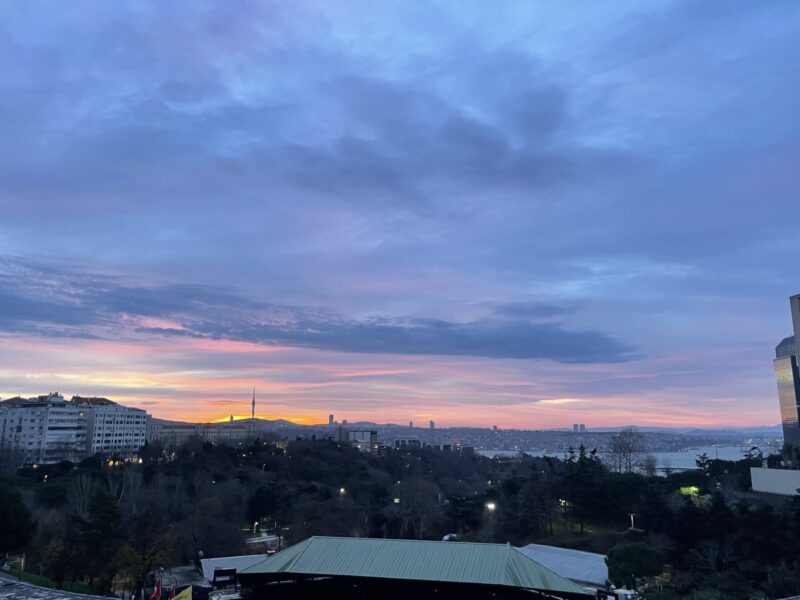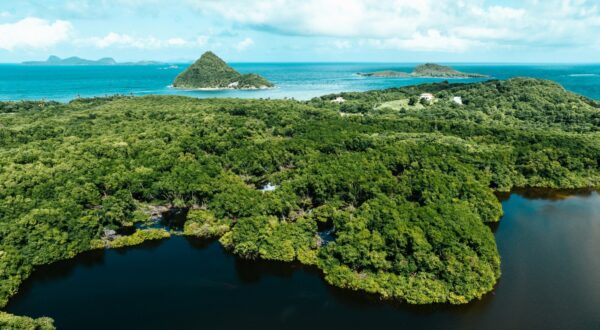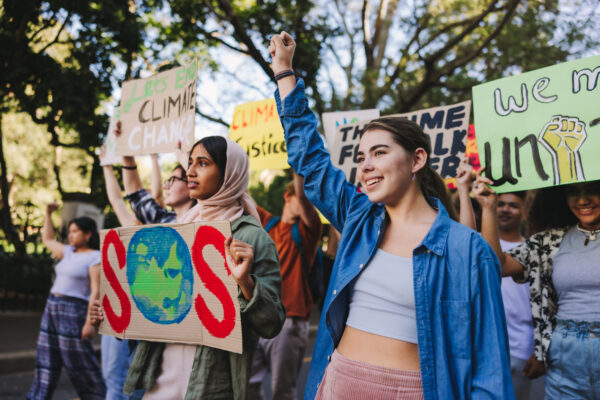The IPCC set to respond to growing demand for climate science to inform policy
Last week in Istanbul, climate scientists and governments met in the sixtieth session of the Intergovernmental Panel on Climate Change (IPCC) to agree a plan for its seventh, and potentially most consequential report cycle. The outcome means the IPCC will most probably take a more streamlined approach to its seventh cycle.
Share

Last week in Istanbul, climate scientists and governments met in the sixtieth session of the Intergovernmental Panel on Climate Change (IPCC) to agree a plan for its seventh, and potentially most consequential report cycle. The newly elected Chair, Prof Jim Skea, and bureau of scientists, will lead the next outputs from the world’s climate science body, at a time where emissions reductions efforts will largely determine if we can limit warming to 1.5°C.
The aim of the session was to come up with an agreement on what reports would be produced, and when, to best inform decision makers around the world. The outcome means the IPCC will most probably take a more streamlined approach to its seventh cycle so that governments will continue to be able to draw on the best available science in the international negotiations and domestic climate action.
A shorter cycle to inform the second Global Stocktake
In the lead up to the session, the case had been made that the IPCC would need to adapt and shorten its seventh cycle to five years to align with the next Global Stocktake (GST) (2026-2028), and the following round of climate targets for 2040 to be submitted in 2030 at COP35.
The ‘technical’ phase for the next GST will most likely run until June 2028, but “critical information” could still be taken into account up to COP33 at the end of 2028 in India.
Recognising how vital the IPCC reports were for the first GST that concluded at COP28, governments deliberately asked the IPCC to “consider how best to align its work with the second and subsequent global stocktakes and also invites the Intergovernmental Panel on Climate Change to provide relevant and timely information for the next global stocktake.”
The decision text from IPCC-60 explicitly acknowledges this invitation and outlines that the strategic planning document to be prepared for its next session in Georgia mid-2024 will take it into account.
The Panel has taken a critical step in plotting the course for the entire cycle. Their decisions reflect the interest of member governments in getting policy-relevant, timely and actionable scientific information as soon as possible and providing input to the 2028 second Global Stocktake.
To align fully with the GST, all three Working Group reports will be needed before June 2028, at the conclusions of the second GST’s technical phase, and at the very latest, by COP33. These inputs will be vital to creating consensus and a robust science-based second GST, shepherded by a potential Indian presidency for COP33.
The IPCC’s seventh cycle will conclude with a Synthesis Report after the completion of the Working Group reports, to be produced “by late 2029”. This isn’t necessarily the date for the Synthesis report delivery, but rather a backstop by which it would have to be produced if timelines got delayed. If the Working Group reports were ready by early 2028, the Synthesis Report could well be released still towards the end of 2028. This would also be in line with previous schedules: the Sixth Assessment Synthesis Report was originally scheduled to come out around half a year after the last Working Group report.
It’s also the only option that leaves the door open for subsequent IPCC cycles to align with future GSTs. The third GST will run from 2031 to 2033, so the next IPCC cycle, AR8, would need to kick off swiftly, to be able to produce a new set of reports five years after, by 2033. There are good signals that the IPCC leadership intend to respond to the needs of the UN climate negotiations, but as the AR7 strategic planning document is not yet approved, nothing is set in stone. It is in the hands of the IPCC leadership now to come up with a plan.
No additional special reports
The last cycle saw a record number of special reports published. Topics included land, oceans and the incredibly consequential special report on 1.5°C, which led to increased awareness of the need for accelerated climate action and the risks posed by climate change even at what was then considered lower levels of warming.
This cycle already has a special report underway - its topic is cities - but others have been proposed including systems transitions, adaptation and tipping points. None of these were able to be agreed, meaning that there will be only one special report in addition to the three Working Group contributions in this cycle.
Scientific community to weigh in on grey areas including adaptation metrics, carbon dioxide removals and carbon capture utilisation and storage
COP28 saw a number of sticky areas emerge in the negotiations, where science could play a critical role in establishing a consensus. The first was adaptation metrics, which are not yet well defined or standardised, but which are incredibly important for discussions around the Global Goal on Adaptation, which was agreed in Dubai last year.
The COP28 text specifically asked the IPCC to “consider updating its 1994 technical guidelines for assessing climate change impacts and adaptation as part of its seventh assessment cycle, as appropriate.” The IPCC has now responded to this call by agreeing to a standalone product to revise these guidelines “including adaptation indicators, metrics and methodologies… for approval and acceptance in conjunction with the Working Group II Report.”
Carbon dioxide removal and carbon capture utilisation and storage (CCUS) also emerged as worrying issues in the negotiations. In 2005 the IPCC produced a special report on carbon capture and storage (CCS) that concluded amongst other things “that the CCS system’s major contribution to climate change mitigation would come from deployment in the electricity sector”. Clearly a lot has changed since then as this is now the last sector in which CCS is considered usable and the fact that remains that CCS technologies are still nascent, and the effectiveness of their deployment is very uneven, representing a huge risk to the climate if relied upon to prolong the use of fossil fuels.
More information on what constitutes carbon dioxide removal and CCUS, including the permanence of emissions removals and effectiveness of capture rates will be incredibly consequential for the perceived role for this technology in the next decades, and the investment and deployment decisions that flow on from that.
The IPCC’s Task Force on National Greenhouse Gas Inventories will pick up the topic of Carbon Dioxide Removal Technologies and CCUS by convening an expert meeting and providing a methodology report. A methodology report on how to calculate short-lived climate forcers will also be produced by 2027. The report on short-lived climate forcers was decided prior to the Istanbul meeting and will be eagerly anticipated by national greenhouse gas accountants given the focus on methane reductions, and the international push to include methane accounting and targets in updated 2030 and 2035 climate targets.
The IPCC’s role as providing policy relevant information necessitates much of the work that it has set for itself in this new cycle. As climate change worsens, and the energy transition accelerates, scientific advice that is still timely is even more important. It will also have to reckon with the explosion of peer-reviewed papers being published. By signalling it intends to pick up the pace, it’s showing recognition for the demand for its work and the role it plays in the international climate arena.
Updated 24 Jan 2024 to include information on upcoming methodology reports in AR7.













